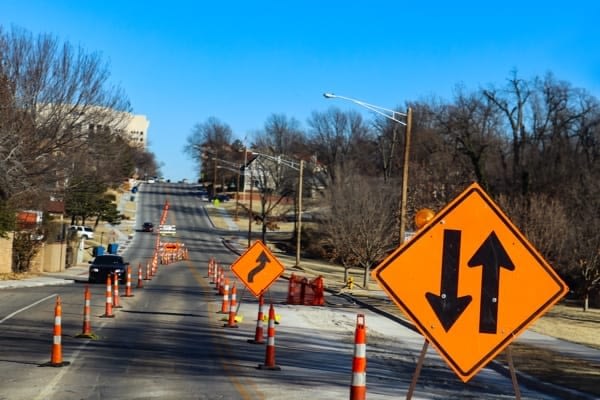- Insurance Services
- Auto, Home & Personal Insurance
- Classic Car Insurance
- Business Insurance
- Business Interruption Insurance
- Business Owners Package Insurance
- Commercial Auto Insurance
- Commercial Property Insurance
- Commercial Umbrella Insurance
- General Liability Insurance
- Hotel & Motel Hospitality Insurance
- Manufacturers Insurance
- Professional Liability (E&O) Insurance
- Surety Bonds
- Workers' Compensation Insurance
- - View All Business
- Life & Health Insurance
- About Us
- Policy Service
- Contact Us
Avoiding Accidents In Construction Zones
Article originally posted on www.insuranceneighbor.com(opens in new tab)

Construction zones introduce a number of hazards, making them especially dangerous locations for motorists. The Federal Highway Traffic Safety Administration (FHTSA) reports that during the past five years, 4,400 people have died and 200,000 have been injured in construction zone crashes alone.
How Do Construction Zone Accidents Happen?
Rear-end collisions are the most common type of accident in construction zones, as many drivers will slam on their brakes when they see workers or lane shifts. These crashes occur most frequently in the summer and fall, and many fatal construction zone accidents occur on roads with speed limits higher than 50 mph.
Stopping Distances in Construction Zones
As reported by the FHTSA, stopping distances for an average passenger vehicle at 50 mph are:
- 300 feet on a dry roadway
- 400 feet on a wet roadway
- 1,250 feet on icy pavement
Keep in mind, however, that a fully-loaded 18-wheeler requires almost 50% more distance to stop than a standard car. If you are following directly behind one of these trucks, be sure to plan accordingly.
How to Reduce the Risk of a Traffic Crash in a Construction Zone
To minimize your risk of an accident, it is important to exercise extra care while driving through a work zone on the roadways. The FHTSA offers the following tips to drivers.
- Be patient–passing through a construction zone will take significantly more time than standard driving.
- Keep your headlights on.
- Stay alert and don’t drive distracted. Give your full attention to the roadway and to driving your vehicle. Avoid changing the radio, operating a GPS, texting, making phone calls, eating, or any other activity that could take your attention off the road.
- Pay attention to the area around you. Watch the brake lights on the vehicle ahead, watch the movement of traffic to your sides, and keep an eye out for any posted signs.
- Don’t tailgate. Maintain a safe distance between your vehicle and the vehicle ahead of you in case they must unexpectedly hit their brakes.
- Obey the posted speed limit. Driving speeds are significantly reduced in construction zones for a reason. Traffic patterns may change, and workers may be present only feet away from your vehicle. Be prepared to slow down even further if necessary, and keep in mind that fines may be doubled for moving violations in construction zones.
- Merge into the proper lane. Traffic patterns can change daily in construction zones, so try to merge into the designated lane early on instead of waiting until the last second.
- Change lanes safely. Only change lanes when indicated by the pavement markings and when permitted by traffic flow.
- Follow all instructions from flaggers. They are there to keep both traffic and construction moving as smoothly as possible.
- Expect the unexpected. When you are traveling through a construction zone, work vehicles and equipment may suddenly enter your lane without warning. Additionally, other drivers may slow down, stop, or change lanes unexpectedly, so keep an extra sharp eye out for traffic changes.
Be Prepared in Case of an Accident
Despite all our best efforts, traffic accidents caused by someone else’s negligence can happen in construction zones and anywhere on the roadways. For example, a driver who stops suddenly without reason can cause a chain reaction that can lead to a rear-end collision or even a multi-vehicle pileup.
Hope for the best but prepare for the worst by purchasing auto insurance with the coverage and policy limits you need. Many factors can affect the price of your policy, including your age, gender, vehicle, driving history, and the state where you live. No matter your situation, our knowledgeable agents can help you find the right car insurance policy to suit your needs at the best available rates.
Filed Under: Personal Insurance | Tagged With: Auto Insurance, Car Insurance